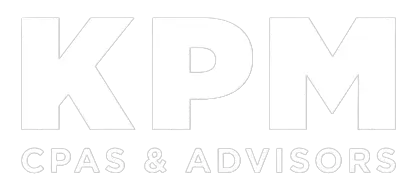Valuation professionals use various methods to determine the fair market value of a private business or business interest. The excess earnings method is one of the more debated techniques. Here are answers to some common questions about this controversial method.
What’s The Excess Earnings Method?
The U.S. Department of the Treasury originally developed the excess earnings method in 1920 to estimate value lost by businesses during Prohibition. This method separates a business’ earnings into two categories:
- Earnings attributable to tangible assets
- Excess earnings, which represent returns on intangible assets
Although not initially designed as a business valuation tool, the excess earnings method is easy for business owners, attorneys, and judges without extensive financial expertise to understand. So it’s sometimes used to value professional practices and small businesses.
How Does The Excess Earnings Method Work?
When applying the excess earnings method, valuators follow these six steps:
- Estimate the value of the organization’s net tangible assets.
- Multiply that value by a fair rate of return to calculate earnings attributable to the organization’s tangible assets.
- Estimate the organization’s total normalized earnings.
- Subtract earnings on tangible assets from total earnings to arrive at excess earnings — that is, earnings above a fair return on the organization’s net tangible asset value.
- Divide excess earnings by an appropriate capitalization rate to calculate the value of intangible assets.
- Combine the tangible and intangible asset values to determine the organization’s overall value.
This “formula” approach may seem straightforward. However, it relies on subjective assumptions, such as determining fair rates of return and capitalization rates, that lack empirical data to support them.
What Are The Criticisms Of The Excess Earnings Method?
Many valuation professionals consider the excess earnings method outdated and unreliable. One of the primary concerns is its susceptibility to manipulation. Because this method allows for subjective inputs, different experts can arrive at significantly different value conclusions for the same business. Other perceived shortcomings of this method include the following:
- It derives value from historical results rather than future earnings. But in reality, past performance is no guarantee of future results.
- It assumes tangible and intangible assets generate earnings independently, which is rarely true in real-world business operations.
- It separates intangible value from tangible value, but all intangibles are combined in one lump sum. A company may own various intangibles — such as goodwill, brands, customer lists, patents and proprietary recipes — with varying rates of return.
- The book value of equity is often used to approximate the value of net tangible assets, but book value is based on historic cost, not market value. The difference could be significant.
- The term “earnings” is subject to interpretation. For instance, it could refer to net income; pretax earnings; earnings before interest, taxes, depreciation, and amortization (EBITDA); or net free cash flow. Earnings streams should be matched to the appropriate return rates.
IRS Revenue Ruling 68-609 provides guidance on using the excess earnings method to value intangibles for tax purposes. It specifically prohibits using this method if there’s “better evidence available from which the value of intangibles can be determined.”
Some courts and regulatory bodies have also expressed skepticism about this method’s reliability and discourage its use. Notably, Florida courts have consistently ruled against the excess earnings method in divorce cases because it doesn’t separate personal (professional) goodwill from enterprise (business) goodwill as required under Florida state law.
When Might The Excess Earnings Method Be Appropriate?
Experts generally prefer other valuation methods — such as the discounted cash flow, capitalization, and market-based techniques — that rely on verifiable market returns and comparable transactions. However, the excess earnings method may still be used for valuing small businesses and professional practices in certain situations.
For example, it may be relevant when evaluating goodwill for divorce settlements in certain jurisdictions, especially when market data isn’t available. Additionally, some valuators use it to test the reasonableness of results from more widely accepted valuation techniques.
For More Information
The excess earnings method is rarely used as a standalone valuation approach today. But it remains a part of the business valuation landscape as a tool for separating intangible value from the value of net tangible assets. Attorneys and business owners involved in valuation disputes should understand the basics. Contact us for answers to any additional questions you have about this method or to determine the appropriate valuation approach for your specific needs.

